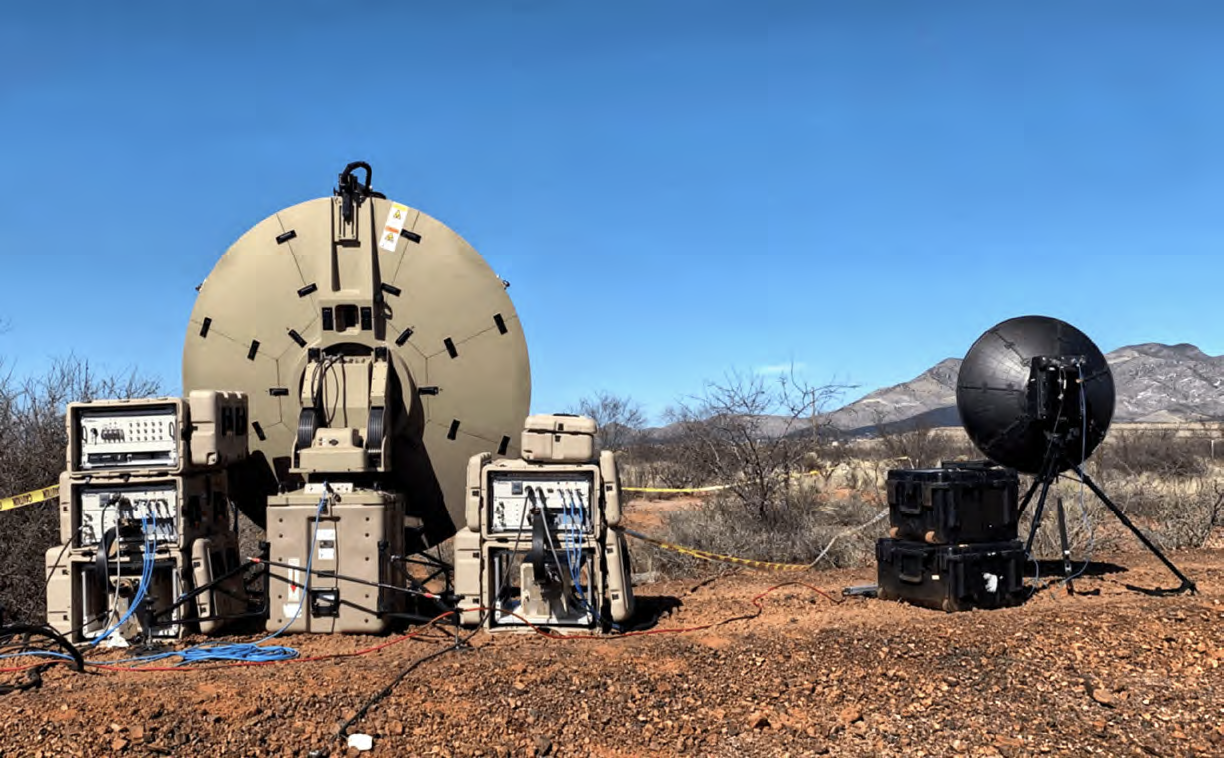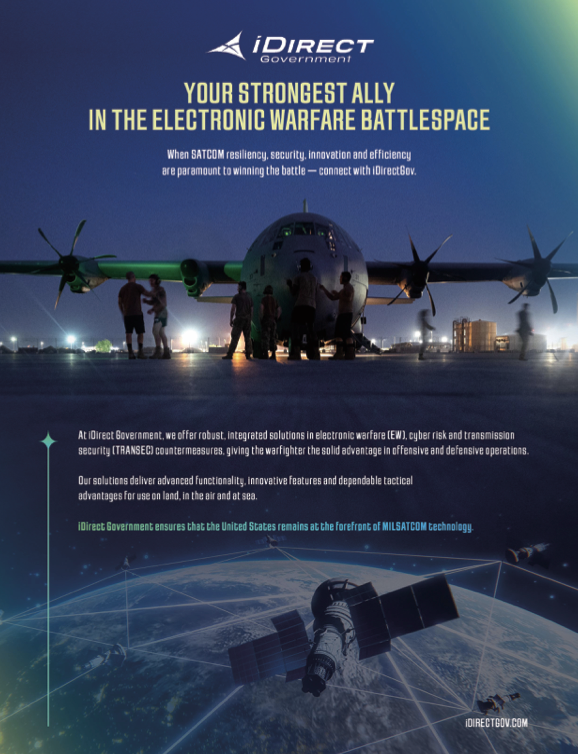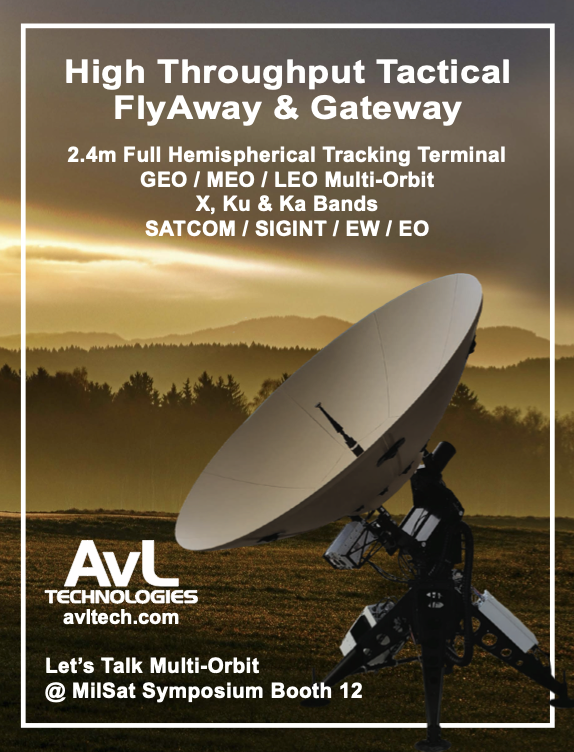Many products and technologies have carried over from military to civilian use over the years, finding their way into our everyday lives whether we realize it or not — from duct tape to the internet itself.

While the military-to-civilian innovation cycle isn’t new, there are certain industries where it’s more likely to occur because the government and private sector have similar needs.
One prime example of this is communications, because any user of end-point communications infrastructure, military or civilian, does so with a high expectation of reliability, interoperability, security, and capacity.
At Comtech, we’re in a unique position to identify such crossover innovation cycles and anticipate how they might influence the growth of our business.
A great example of this — which we recently discussed in our blog, Signals — is our Troposcatter Family of Systems.
Historically, our troposcatter equipment has been deployed with the U.S. Department of Defense and our allies to establish communications in environments where it’s not possible, or desirable, to use radio, digital or satellite comms.
This is particularly true in places where there is unpredictable weather, or topography like mountains and deep canyons that would interfere with line of sight.
It’s not hard to pinpoint other industries that also operate in challenging environments, including oil and gas, utility, marine and even rail transportation.
Looking at oil and gas (O&G) specifically, it’s critical for operators to consistently monitor their facilities and pipelines so they can quickly identify maintenance issues that might otherwise lead to environmental disasters.
However, these pipeline networks are both usually large (for example, the Department of Transportation estimates that in the US alone there’s more than 2.6 million miles of pipelines delivering natural gas and liquid petroleum) and in places where traditional communications infrastructure does not — or cannot — exist.
In the aforementioned case, there is a clear opportunity to use troposcatter technology to create a highly-reliable communications infrastructure that sends and receives real-time data to maintain efficiency and safety.
Comtech is already seeing the start of this adoption cycle, and in recent years, we have secured troposcatter deals within the O&G industry.
This includes the first commercial use of modern troposcatter technology in Europe for the Midia Gas Development Project in Romania to enable communication between a shore site and an unmanned platform.
We have also inked a troposcatter contract with a major international oil and gas company to ensure contact with a floating facility.
While this sector is still in the early stages as it relates to adopting and deploying troposcatter, over time, we see significant potential for growth.
In addition to troposcatter solutions, VSAT (very small aperture terminal) technology has great potential to scale beyond the military as well.
VSAT networks are also used for establishing communications over far distances or in hard-to-reach locations, independent of public infrastructure, but instead of using microwave radio signals, such as troposcatter, VSAT transmits and receives data, video and voice signals using satellites to connect with ground stations.
One could see how this technology would benefit government and defense applications, but VSAT has many commercial applications as well.
For example, VSAT can:
• Maintain point-of-sale connections for retail customers
• Provide uninterrupted remote learning experiences for people in rural areas
• Manage connections for banks and financial institutions conducting high volumes of trading activity.
In fact, according to a recent study, the VSAT market is expected to grow at a 6.55% CAGR through 2031 to an estimated global market worth $8.45 billion.
As the appetite for fast, dependable satellite communication in underserved areas grows and more organizations require greater connectivity for Internet of Things (IoT) applications, we expect to see opportunities to expand our footprint in the VSAT market.
Innovation is born from necessity. We would argue this is true of the military, as innovation accelerates the development of technologies to satisfy their most pressing needs.
However, this also paves the way for these innovations to become mainstream. As other industries look for more sophisticated means to elevate their own communications infrastructures, Comtech already boasts the solutions and the track record to be the correct partner, whether for military/agency/government (MAG) or commercial use.
Troposcatter + the military: a closer look
According to U.S. Space Command (August 31, 2023), as the demand for satellite bandwidth grows and more actors enter the space arena, the once-uncongested satellite environment is becoming increasingly contested.
The contention poses significant challenges to traditional satellite communications systems, leading to exploration of alternative solutions, such as tropospheric scatter, or Troposcatter, communications.
The contested satellite environment
Satellite communication has long been favored for its ability to provide wide coverage and high bandwidth connectivity across vast distances. This advantage, however, has led to an overcrowded space environment. Governments, militaries, and corporations are launching more satellites into orbit, resulting in increased competition for radio frequency (RF) spectrum and potential interference issues.
Moreover, the emergence of anti-satellite technologies (ASAT) and rapid evolution of satellite-targeted cyber threats have raised concerns about the reliability and security of traditional satellite communications systems.
Understanding troposcatter communication
Troposcatter communications is a technology that leverages the scattering of radio waves in the Earth’s troposphere — the lower portion of the atmosphere — to establish communications links over distances beyond the radio horizon or beyond line of site (BLOS).
Today, modern Troposcatter technologies send signals toward the troposphere, where they interact with atmospheric particles and scatter in various directions. A receiver located within the scatter region can pick up the signal enabling robust, resilient, and secure communications between the transmitter and receiver.
Advantages in contested environments
Comtech’s next generation Troposcatter Family of Systems (FoS) offer several advantages in contested satellite environments:
-
• Resistance to Jamming: Unlike traditional satellite signals that can be vulnerable to jamming or interference, Troposcatter signals are more resistant due to their reliance on atmospheric scattering. Attempts to jam a Troposcatter link would require jamming a significant portion of the Earth’s atmosphere, making such efforts impractical.
-
• Reduced Susceptibility to Cyberattacks: Troposcatter connections provide a smaller attack surface than broad area satellite beams, increasing the difficulty, cost, and complexity of launching a successful cyberattack. This inherent security advantage makes Troposcatter an attractive option for transmitting sensitive information.
-
• Distributed Architecture: Troposcatter technologies are designed with distributed architecture, enabling multiple relay stations to create a network that can adapt to changing conditions. This flexibility is particularly valuable in contested environments where fixed satellite infrastructure might be compromised.
-
• Lower Latency: Modern Troposcatter systems offer lower latency compared to satellite communications, as the signal does not have to travel all the way to space and back.
This can be crucial for real-time applications like video conferencing or remote-control critical systems.
-
• Spectrum Efficiency: As spectrum becomes a limited resource in contested environments, Troposcatter can make more efficient use of available frequency bands, potentially mitigating spectrum congestion.
Comtech’s troposcatter family of systems
Comtech’s portfolio of defense and security technologies, including the company’s Troposcatter FoS, are uniquely positioned to deliver capabilities that will enhance Combined Joint All Domain Command and Control (CJADC2) operations.
The company has extensive experience developing and deploying customized, interoperable, robust, and resilient communications systems for all branches of the DOD and coalition forces.

Comtech’s expansive portfolio of defense and security technologies is designed to continuously evolve over time to meet emerging Command, Control, Computers, Communications, Cyber, Intelligence, Surveillance and Reconnaissance (C5ISR) use cases and enhance mission effectiveness in the future of all domain command and control (C&C) operations.
comtech.com





